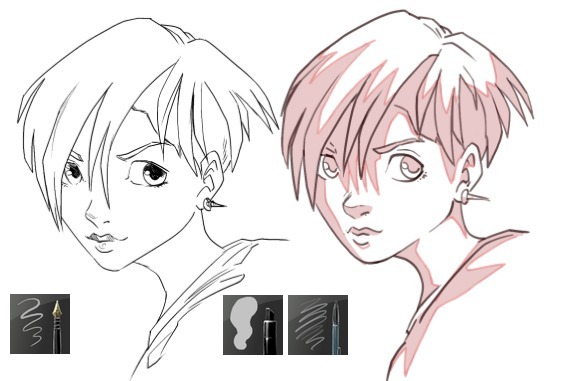
This allows you to set the precision linked to the size. You’d want an inking brush to have a precision of 5 at all times, but a big filling brush for painting doesn’t require such precision, and can be easily sped up by setting precision to 1. The lower, the faster the brush, but the worse the rendering looks. This changes how smooth the brush is rendered. This option is best used in combination with Auto Spacing. On the left without smooth lines, and the right with. In the below example, both strokes are drawn with a default brush with fade set to 0. This toggles the super-smooth anti-aliasing. In the below picture, the three examples on right are with auto spacing, 0, 1 and 5 respectively. The result is fine control over the spacing. Ticking this will set the brush-spacing to a different (quadratic) algorithm.


In the below picture, the three examples on the left are with spacing 0, 1 and 5. This affects how far brushes are spaced apart. In the example below, the brush is set with randomness 0%, 50% and 100% respectively. This changes the randomness of the density. In the example below, the brush is set with density 0%, 50% and 100% respectively. This determines how much area the brush-covers over its size: It makes it noisy. This gives the amount of tips related to the ratio. This changes the angle a which the brush is at. With fade separately horizontal and vertical. Fade has a different effect per mask-type, so don’t be alarmed if it looks strange, perhaps you have the wrong mask-type. You can click the chain-symbol to lock and unlock these settings. Out of the three auto brushes, this is the slowest. This one uses the gaussian algorithm to determine the fade. This one’s fade is controlled by a curve! Gaussian Of the three auto brushes, this is the fastest. The Fade parameter produces the below results. Types ¶įirst, there are three mask-types, with each the circle and square shape: Default


These brush tips are generated by Krita through certain parameters.


 0 kommentar(er)
0 kommentar(er)
